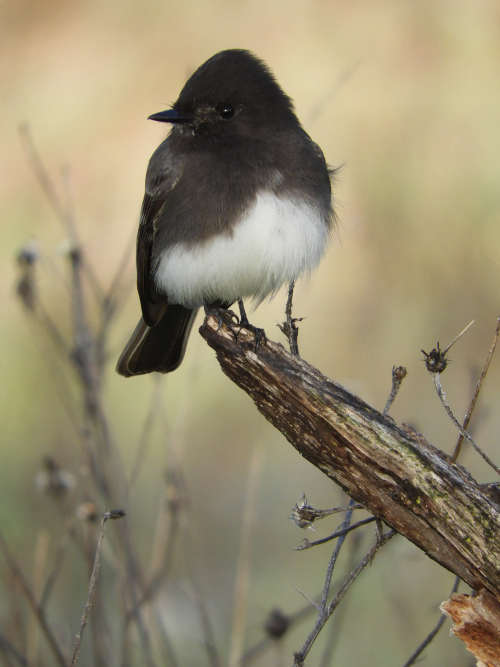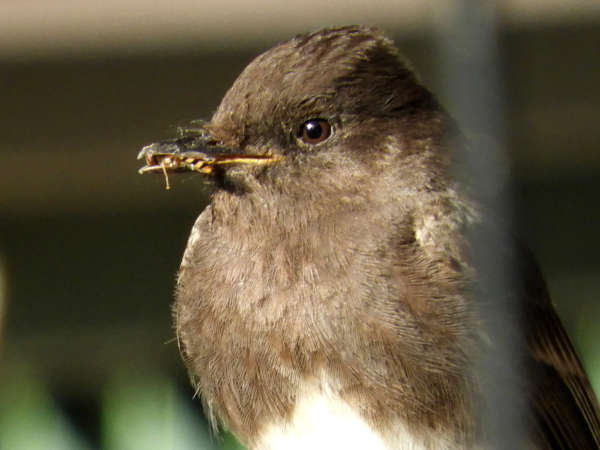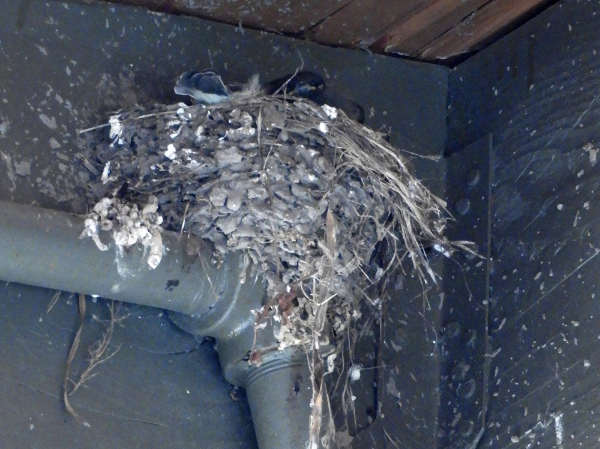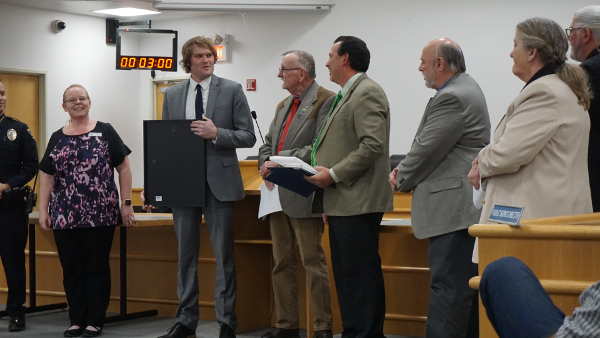- Mary K. Hanson
- Posted On
Tuleyome Tales: The tiny territorial black phoebe

NORTHERN CALIFORNIA – There’s a common joke that goes around among local birders: “If you don’t see any other birds when you’re out and about, you’ll still see a black phoebe.”
And that’s often true. These little dusky and white, in-their-tuxedo birds seem to be everywhere and that’s because they are so adaptable.
Black phoebes (Sayornis nigricans) can always be found around water sources, where they have ready access to mud, all along the western side of California (and into Oregon and South America).
Because of their adaptability, they can be found in wild areas, around farmsteads and in urban areas. They just need a supply of water, mud for their nests, and insects for their diets.
Usually, they’re exclusively insectivorous, but they have been known to occasionally eat berries when insect supplies are low or minnows when they need the extra protein.
Because they’re not seed-eaters, they won’t come to your bird feeders, but you can still attract them if you plant pollinator gardens on your property.
They like bees and wasps, hoverflies, spiders, grasshoppers, damselflies and dragonflies, and basically any kind of caterpillar, bug or beetle.
In wild landscapes or in town, black phoebes are easy to spot partly because of their penchant to pump their tails up and down when they’re sitting on branches watching for insects, and also by listening for their distinct call which is usually a repeated dee-he, dee-ho; dee-he, dee-ho. Both sexes sing, but it’s usually the male who does most of it.
The black phoebe is a kind of flycatcher and one that doesn’t migrate much from its home territory. They’re generally considered solitary birds outside of their breeding periods, but they can have up to three breeding seasons in a single year, so that’s a lot of together-time. The bonded pairs are monogamous and will usually nest in or around the same place each time every year.
It’s during this time of year, March through April, when the nest selection and building processes begin. The males fly around in front of potential nesting sites, and then the female will choose which one she likes best. She’s also the one who does the actual nest construction.

The nests are mud cups filled with fine grasses, and are usually built on walls, posts or cliff-faces under some kind of overhang or eave. The space between the top of the nest and the overhang is usually quite narrow, allowing only the small birds to get inside of it. This helps to protect defenseless offspring from predators like foxes, snakes and cats.
The black phoebe’s eggs are glossy white (sometimes with spots at the larger end) and there are usually up to six in a clutch. The chicks are fuzzy gray when they hatch, but they’ll fledge out in about eighteen days. Adult males and females have identical coloring so it’s hard to tell them apart, but the juveniles are recognizable by the buff-colored bars on the feathers of their wing-caps.
Although they’re small, the black phoebes are notorious for their aggressive territorialism. They seldom allow other birds of any kind to come within 100 feet of their chosen nesting sites.
But there was an odd short-lived exception to this rule noted by Cornell University’s “All About Birds” Web site which recounted the story of a pair of house finches who laid eggs in the nest of a pair of black phoebes, even though the phoebes had already laid six of their own eggs in the nest. The female birds took turns incubating the eggs for about a week before they all lost tolerance of one another and abandoned the site.
There are six subspecies of black phoebe, and the one we see most often in our region is Sayornis nigricans semiatra. It’s distinguished from some of the other subspecies by the peak of feathers on the top of its head. (The white-winged black phoebe found further south has a smooth head with no peak.) They can live for up to 10 years in the wild.
Mary K. Hanson is a Certified California Naturalist, author and nature photographer, who developed and helps to teach the naturalist program at Tuleyome, a 501(c)(3) nonprofit conservation organization based in Woodland. For more information, visit http://tuleyome.org/projects/calnat/.
















